Exhibition place:Brocade square, China National Silk Museum
Exhibition time:2019.10 - 2020.1
Curator: Assadour Markarov
Team: Chang Weijing, Jiang Linjuan, Kong Yizhao, Li Ying, Peng Sisi, Ren Zhe, Wang Hongpeng,YuanYingjie, Zhu Zhixian, Zhang Wanying
Special thanks to:To Professor ShiHui and Huang Yan, and the whole body of teachers and students from the Fiber Art Department in China Academy of Art – who helped with the organization and installation of the whole project. And to the support of the China National Silk Museum.

▲“The maze of Silk Road”
Team : Chang Weijing, Jiang Linjuan, Kong Yizhao, Li Ying, Peng Sisi, Ren Zhe, Wang Hongpeng, Yuan Yingjie, Zhu Zhixian, Zhang Wanying
The“Labyrinth”and the design idea of this project, comes from the route of the Silk Road and sea. And the whole form was inspired from the old Chinese calligraphy based on the‘Jiaguwen’ inscriptions from Shang Dynasty of the character ‘silk’.
The cross-section constructed ‘maze’ is wrapped on with a white translucent and transparent fabric mesh, which can convey the light and shadows, and also can be seen the surrounded natural environment.
The overlapping images of people, the atmosphere and different artworks are interlaced with each other, and there is nothing but ‘reality’ in the space. All that gives to the people and different groups the possibility to communicate and interact with each other in the labyrinth.

▲Title:“The ‘objects’ put on record”
Artist: Ren Zhe
Material and technique: Processed acrylic disks, glueing.
The inspiration of this work comes from the insert toys of childhood. The round insert pieces are just like the discs. The discs not only have the function of storage, also means "carrying" and "inheriting". It is like a thread connecting the history with the tomorrow, linking memory with fantasy, sailing from the past to the future. Different colors are combined into a free form at will, at the same time, adding the element of the mirror, not only integrates with the surrounding environment, but also brings more interests.
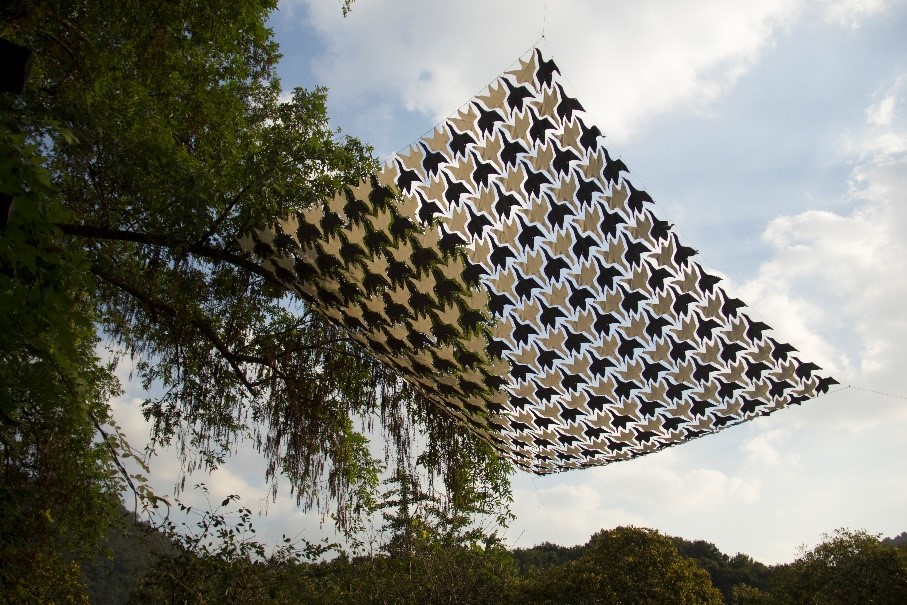
▲Title: “The Silk Road story of wild goose”
Artist: Peng Sisi
Material and technique: polyester fabric, steel wire.
The inspiration of the work is coming from the story of the Silk Road: Zhang Qian was on a mission to the western regions and united with the western countries to fight against the Huns. However, he was put under house arrest on the grassland. For more than ten years, the wild goose flew south and back from the south. The symbol of wild goose in ancient poems has another meaning: it is the witness of nature and human beings, and the representative of the eternal nature. The endless cycle of repetition is also a conversation between one time and another.
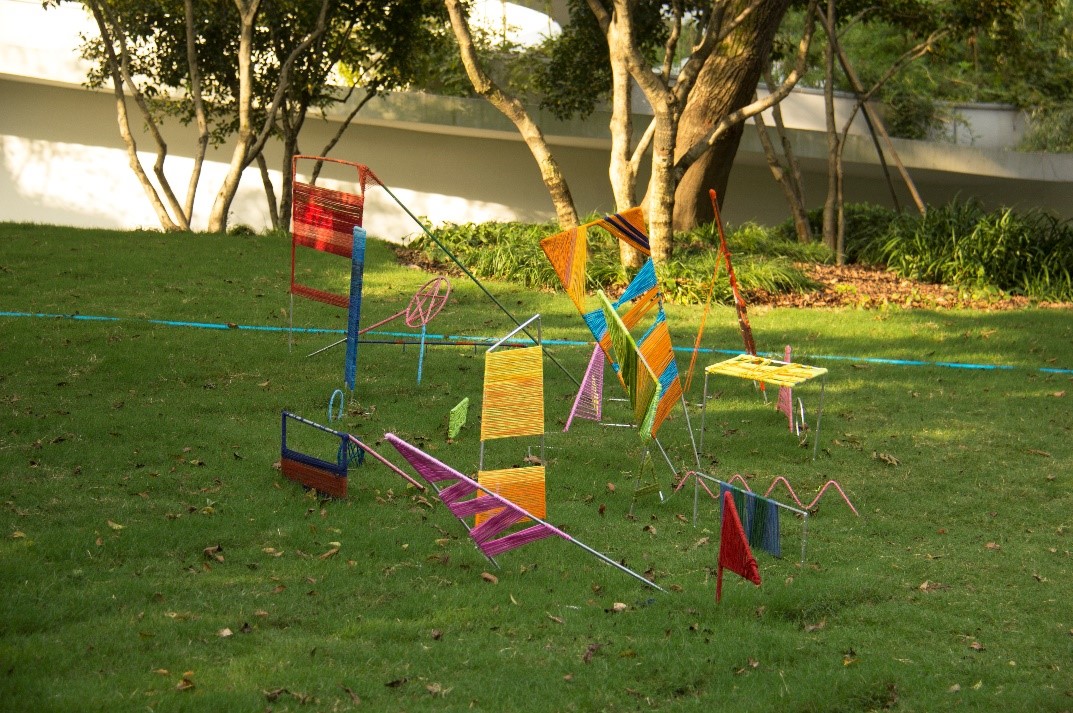
▲Title:“Playful game”
Artists: Zhang Wanying
Material and technique: Steel bar, wool, wrapping.
Through the simple geometric frame, I try to explore the change of the turning point of the object in space and reflect the different expressions of the point, line, plane and body in space. The steel bar and wool, two materials with different possessions, form a contrast in texture. Hoping that the work can interact and connect with the audience and especially the children.
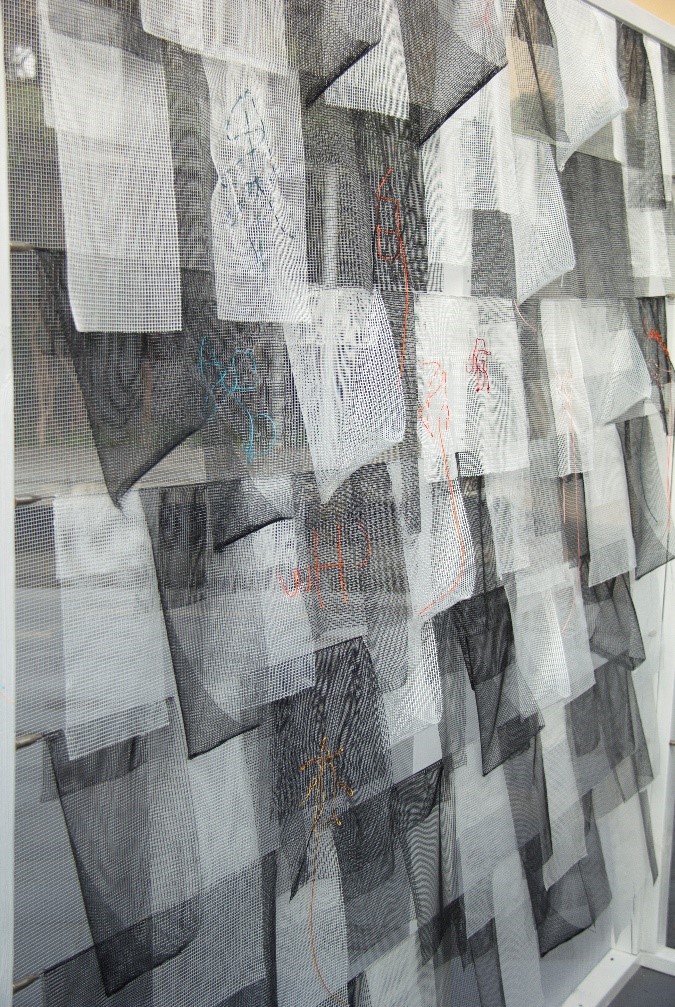
▲Title: “Overlapping”
Artist: Kong Yizhao
Material and technique: Polyester fabric, steel wire.
The woven silk fabrics it is very light and thin, presenting a translucent state. Cut it into pieces and re-sewn, like a ‘distant’ mountain, layer upon layer, they looks like the reflection of water, partly hidden, partly distant.

▲Title: “Interlaced shuttles”
Artist: Zhu Zhixian
Material and technique: Shuttles and ribbons.
In the past, the shuttle was a weaving tool that was used to weave a fabric, by going back and forth on the loom. Time is like a shuttle, weaving the past, present and future into a series of memories and stories. I combine traditional wooden shuttles with modern ribbons to present an interwoven sense of time and space.


▲Title: “Awaiting”
Artist: Peng Sisi
Material and technique: Color treads, binding and wrapping.
Xinjiang is the core area of the Silk Road economic belt. There are ‘tassels’ on the cushions of local handicrafts such as flower hats, which is an exotic and cultural symbol. All this ‘tassels’ used in the artwork also have the meaning of harvest, seed and hope, whether it is the idea for the ancient Silk road or nowadays the modern ‘belt and road’ project. And this is a wonderful development, awaiting bloom, it also like the past, present and future ‘witness’.
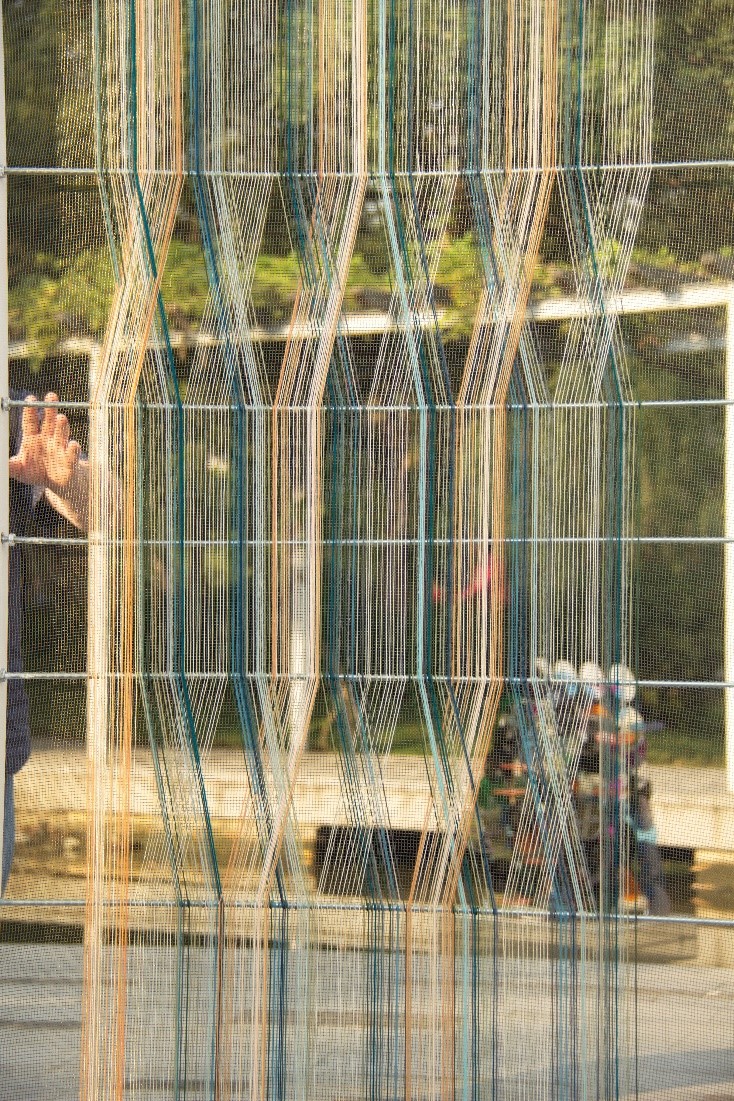
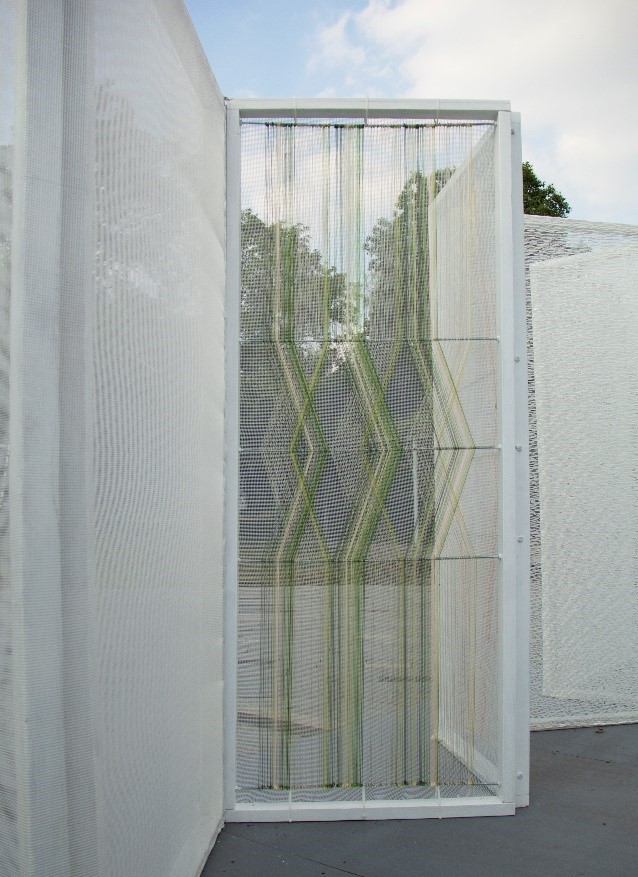
▲Title: “Untitled”
Artist: Jiang Linjuan
Material and technique: Wool, gold and silver treads.
The silk thread is divided into several bunches from a whole bunch, and then many bunches belong to one bunch, such as ‘one’ produces ‘numerous’ and then belongs to the ‘one’, and it is consistent, which is the natural environment of the museum.

▲Title: “Silk Road threads”
Artist: Yuan Yingjie
Material and technique: Gold and silver treads.
The silk threads are arranged in the displayed frame, and the viewer can not only see the silk thread, but also see the silk museum through the thread, creating the effect of the thread and the museum scenery, presenting the dim interweave with surroundings.
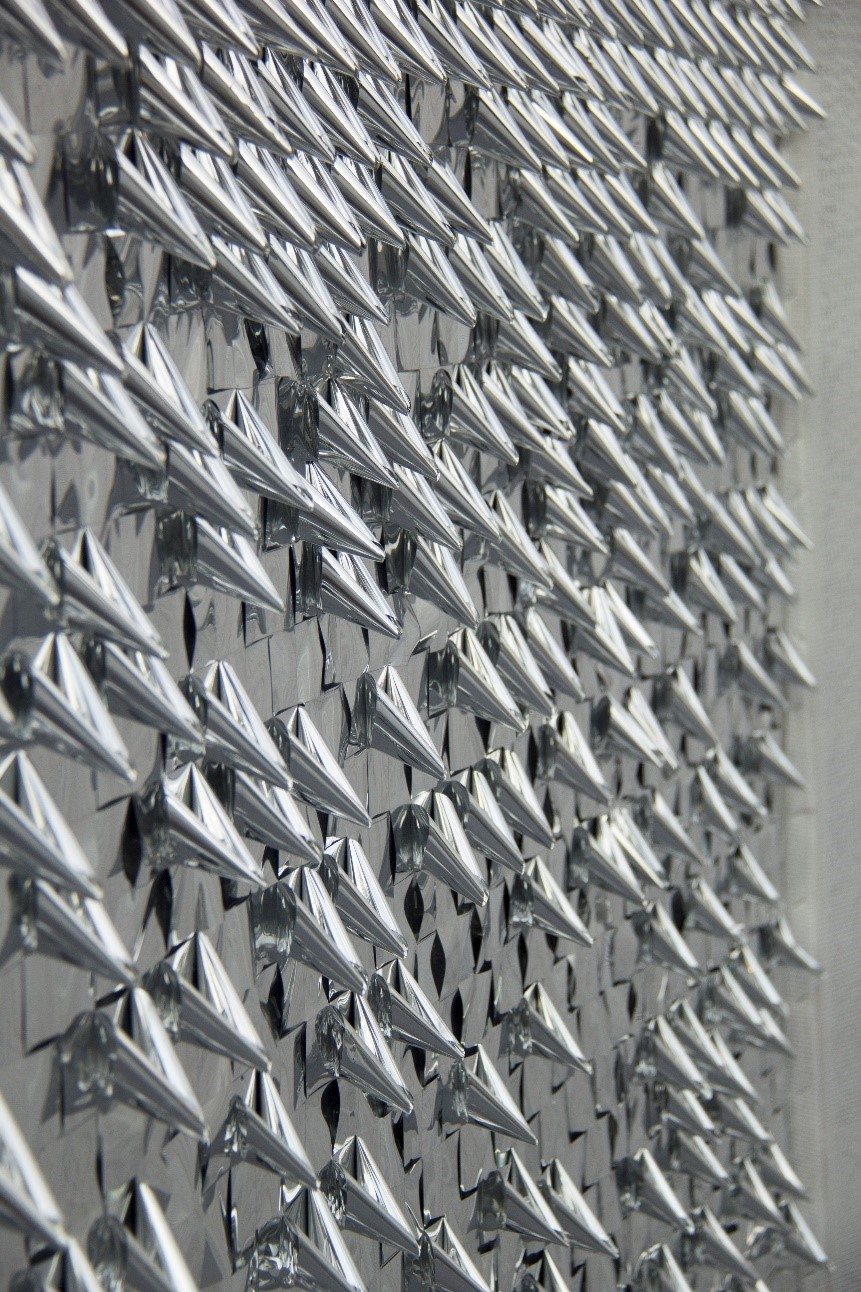
▲Title: “Mapping”
Artist: Li Ying
Material and technique: Mirror surface PC
The use of ‘mirror’ material can be expended to map the characteristics of the external environment of one space, and like this the artwork can interact with audience in an interesting and unexpected way.
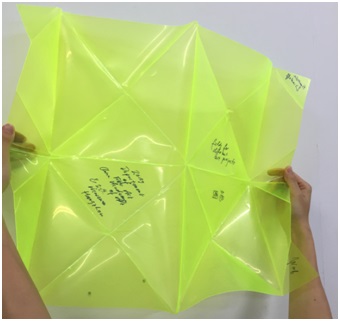

▲Brochure:“The folded boat”
Material and technique: paper
The folded paper boat contains a map of the all body of student's art works. When unfolded shows the art work's information. The boat may be put into the water to flow.
 Pay attention to us
×
Pay attention to us
×